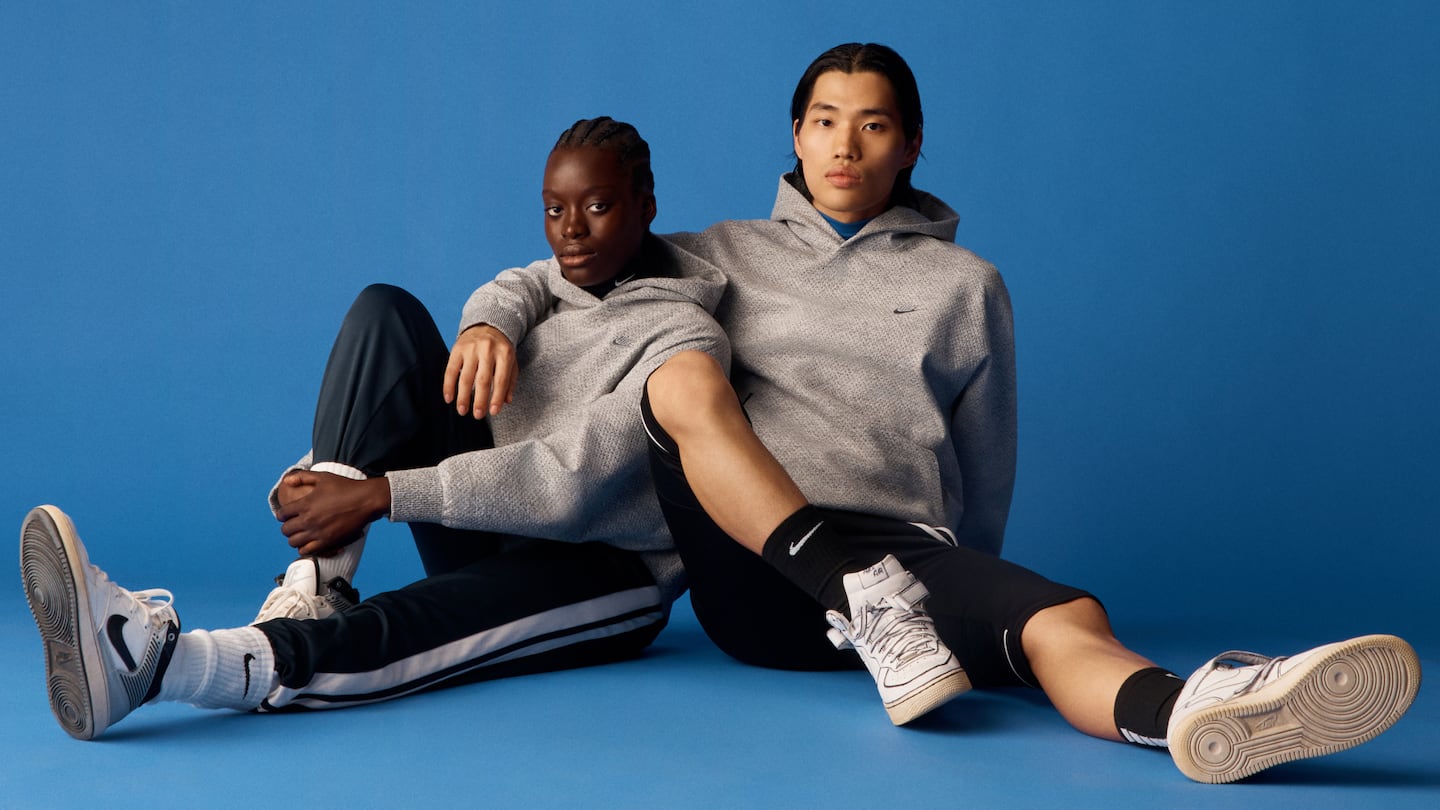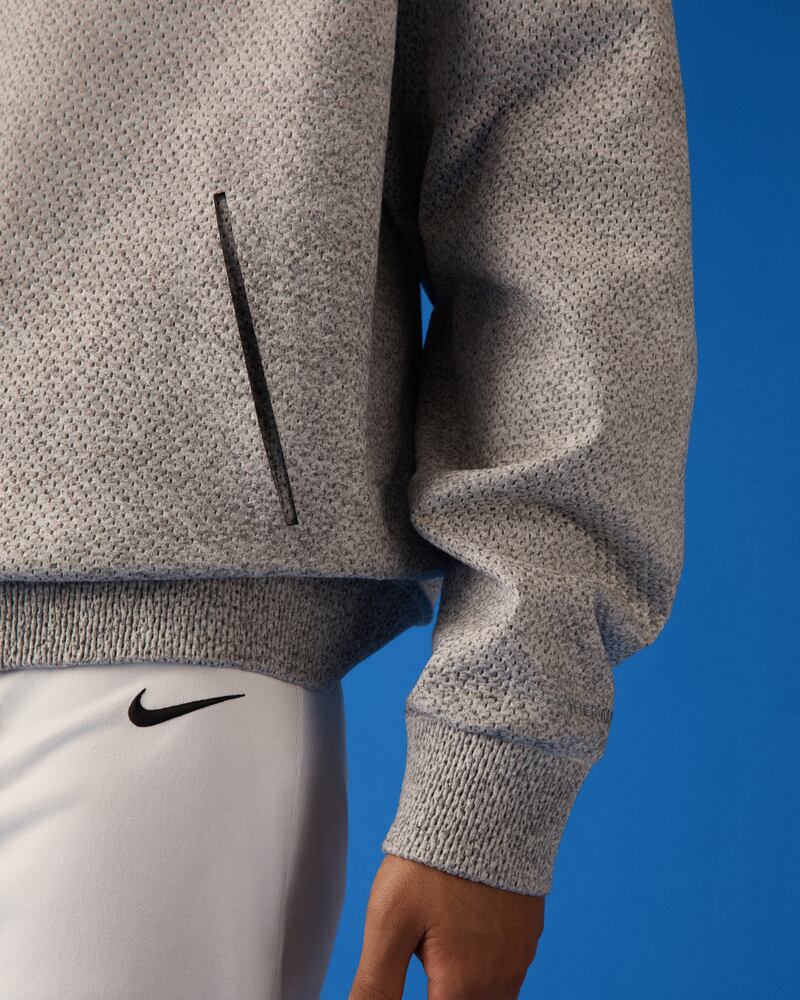
The Business of Fashion
Agenda-setting intelligence, analysis and advice for the global fashion community.

Agenda-setting intelligence, analysis and advice for the global fashion community.

To develop Forward, a new material Nike is touting as its biggest apparel innovation in decades, the company had to look beyond the usual industries of sports and fashion.
“We actually have been watching this technology in the medical and automotive space for a while now,” said Carmen Zolman, Nike’s vice president of innovation apparel design. “We were definitely intrigued by the method of make in terms of its simplicity and its speed.”
After more than five years of work, Nike is bringing it to market and expects it to play a major role in its clothing business, which generated $13.6 billion in sales in the year through May 2022. Forward is a more sustainable material with even better performance qualities than its usual materials, according to the company. It has a higher warmth-to-weight ratio and a carbon footprint that’s 75 percent smaller than the brand’s comparable knit fleece, Nike said.
The first products — sweatshirts in hoodie and crewneck styles — release globally on September 8, but Nike is already comparing it to Dri-Fit, the sweat-wicking material Nike debuted more than 20 years ago that came to feature prominently in everything from its tops to socks.
ADVERTISEMENT
John Donahoe, Nike’s chief executive, went with a slightly different analogy when teasing it on the company’s earnings call in June, saying it “could do for apparel what Flyknit did for footwear.” Flyknit introduced a new footwear manufacturing process that was faster and produced less waste by letting Nike weave shoe uppers rather than having to cut panels of materials and stitch them together. That process now features in numerous Nike sneakers and has also been used for sports bras.
Forward is similar in that Nike sees it as a manufacturing innovation that will ripple through its offering and, according to Zolman, could even eventually make its way into footwear. The process to make it cuts out some of the most carbon-intensive steps of traditional clothing production, specifically spinning raw fibres into yarn and then weaving or knitting that yarn into fabric. If Nike is able to replicate the success of either Dri-Fit or Flyknit, it would provide a sizable boost to its apparel business, which despite a dip in the latest quarter due to Covid lockdowns in China and supply-chain delays, has remained strong in recent years by combining performance and fashion.
First, however, Nike may need to convince shoppers to embrace Forward’s unique look and feel. The material has an industrial quality. It’s like a thin, slightly stiffened felt, punched full of little holes, with a more rigid drape than the usual sweatshirt materials. (Nike is using it for cold-weather products to start, but Zolman said they can adjust it for other uses, including warm-weather items.)
“Customers do look to Nike for innovation,” said Jessica Ramirez, senior research analyst at investment firm Jane Hali & Associates. “It’s something that does keep you ahead of the game — and you always want to be ahead of the game.”
What makes Forward different from most activewear materials comes down to the way it’s made.
Any clothing fabric that isn’t an animal hide is generally a knit or woven. Forward is neither. It’s in the family of what are called non-wovens, which include the material used for surgical masks. To create it, Nike feeds a web of fibres — mostly recycled and virgin polyester — through a machine containing a bed of thousands of tiny needles that punch through and attach them together.
The result is a layered fabric Nike says it can adjust to its specifications, changing the weight or texture based on its needs. The ribbing at the sleeves and hem on Nike’s first Forward products, for example, are made by the same process as the body.

“We’re effectively going from fiber to fabric, and it allows us to tune that performance to whatever our athlete needs,” Zolman said. “It’s a hoodie today, but it’s going to be so much more tomorrow.”
ADVERTISEMENT
Nike believes consumers will buy it because the benefits are worthwhile. It doesn’t compromise on athletic performance and satisfies shoppers’ demands for products that are less damaging to the climate. The company said its calculation of Forward’s carbon footprint is based on a cradle-to-gate assessment by PRe Sustainability B.V., a Netherlands-based consultancy.
Usually fabric is dyed and finished, too, which can involve large volumes of water and toxic chemicals. Nike isn’t dyeing the material for the first launch so it didn’t use any water. The grey colour is the result of Nike using black and white fibres to make the fabric.
The manufacturing process also enables Nike to use a variety of recycled materials, including industrial and post-consumer waste. The products in the first release will contain more than 70 percent recycled content and won’t have zippers or extra trims, making them easier to recycle themselves.
Because it uses so much polyester, Forward can’t dodge one of activewear’s biggest problems: the shedding of microfibres that are polluting oceans and even the air. Zolman, however, said their tests found it sheds less than knit fabrics.
If Nike really wants to use Forward to cut its carbon footprint, it will need to scale the technology. That’s not so simple.
Nike’s engineers had to modify existing machines to develop Forward, much like Nike did when it created Flyknit. It’s not a simple off-the-shelf solution. But Zolman noted the company has been working with its global manufacturing partners to get the technology ready to scale.
Of course, just adding more clothes, even if they have a smaller carbon footprint, on top of its existing business won’t actually reduce Nike’s total impact. The company would also have to start selling more Forward items in place of what it offers now.
“Is it a good-looking product? Does it feel nice? Does it serve a purpose? If so, I don’t think the customer needs a full education,” Ramirez said. That Nike’s name is on it will probably make them more willing to give it a try, she added.
“As our biggest innovation platform since Dri-Fit, we do have big plans for it,” Zolman said. “We believe it’s our responsibility as a very large apparel manufacturer to not only innovate these new ways of doing things sustainably, but to bring them to scale.”
With the Dunk past its prime, Nike is looking for its next hype sneaker. It’s banking on the AJ2, the forgotten child of the Jordan family.
Armed with extensive patent portfolios, Bolt Threads, Modern Meadow, MycoWorks, Natural Fiber Welding and others are targeting luxury brands with alternative materials.
How did Nike’s share price hit an all-time high in the middle of a pandemic? The American sportswear giant’s success is rooted in a radical direct-to-consumer strategy built around content, community and customisation, and conceived for a post-internet world where brand connections are everything.

Marc Bain is Technology Correspondent at The Business of Fashion. He is based in New York and drives BoF’s coverage of technology and innovation, from start-ups to Big Tech.
Successful social media acquisitions require keeping both talent and technology in place. Neither is likely to happen in a deal for the Chinese app, writes Dave Lee.
TikTok’s first time sponsoring the glitzy event comes just as the US effectively deemed the company a national security threat under its current ownership, raising complications for Condé Nast and the gala’s other organisers.
BoF Careers provides essential sector insights for fashion's technology and e-commerce professionals this month, to help you decode fashion’s commercial and creative landscape.
The algorithms TikTok relies on for its operations are deemed core to ByteDance overall operations, which would make a sale of the app with algorithms highly unlikely.